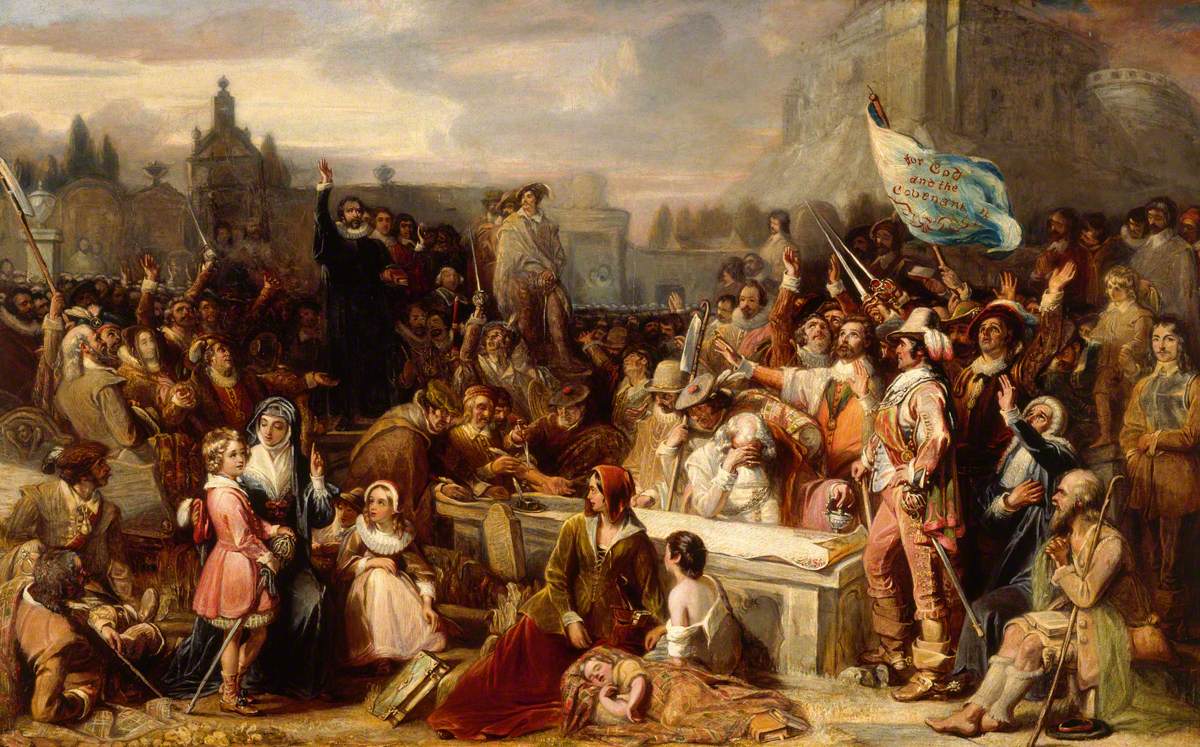Archbishop William Laud and the Bishops' War (1639-40)
Commentary
William Laud (1573-1645) became Archbishop of Canterbury in 1629, as trusted advisor of King Charles I (1600-1649), and staunch supporter of his personal rule. Laud promoted a series of changes within the Church of England that moved it toward a more ritual-based hierarchical structure ('High Anglicanism'). For instance, he rejected the traditional wooden communion table in favour of a stone high altar, which he instructed to be placed to the east end of the church. Generally, he was keen to distance the Anglican Church from Puritan Calvinist doctrines like that of predestination. Laud's position and that of his followers have been described as Arminian, after the Dutch theologian Jacobus Arminius, who had rejected predestination.
Charles I supported Laud's policies, which were consonant to his own attempt at imposing an absolute regime in his kingdom. Charles believed that the power of the monarchy depended on religious conformity throughout its lands. As such, in 1637, he attempted to impose Laud's newly-drafted Book of Common Prayer throughout Britain, including Scotland. The Church of Scotland, although nominally episcopal in structure, had strong presbyterian-Calvinist leanings, and strongly objected to the idea of following the Anglican liturgical system. Riots took place, and in early 1638 the National Convenant was issued in Edinburgh. The Covenant proclaimed a return to the presbyterian form of the Church of Scotland, and rejected Laud's Book of Common Prayer. The Church's General Assembly of 1638 was composed mainly of ardent Covenanters, and by 1640 the Covenant was adopted by the Scottish Parliament.
The_Signing_of_the_National_Covenant_in_Greyfriars_Kirkyard,_Edinburgh.jpg

William Allan (1782–1850), The Signing of the National Covenant in Greyfriars Kirkyard, Edinburgh (City of Edinburgh Council, PD).
Charles I responded aggresively, marching 20,000 men to the vicinity of Berwick-upon-Tweed on the English side of the border in the summer of 1639. It faced a Scottish army of c.12,000 men camping nearby. There was a diplomatic attempt to avoid combat the military standoff through the Pacification of Berwick (19 June), with the King agreeing to referring the disputed matters to General Assembly and the Scottish Parliament. Yet these only confirmed the previous decisions of upholding presbyterianism, and even rejected royal control.
In an attempt at getting more support and finance for the Scottish war (formally known as the Bishops' War), Charles I summoned the English Parliament, only to be faced with a huge amount of grievances, a fact which made him dissolve it again. As the Scots attacked Charles's poorly prepared troops, they overcame them and occupied most of Northern England. Defeated, Charles I accepted a financially-crippling peace through the Treaty of Ripon (1640). In turn, to obtain the money, he was forced to summon the Parliament again, only to be faced with a much worse crisis when it demanded the arrest of his supporters the Earl of Strafford (quickly executed in 1641) and William Laud. The Parliament, which was dominated by Puritans, tried to involve Laud in a supposed Roman Catholic conspiracy. In 1641, Charles I allowed Laud to be imprisoned in the Tower of London pending trial for high treason. He also tried to make some concessions but eventually the conflict degenerated into the English Civil War.
Credit: Georgiana Hedesan (June 2018).
